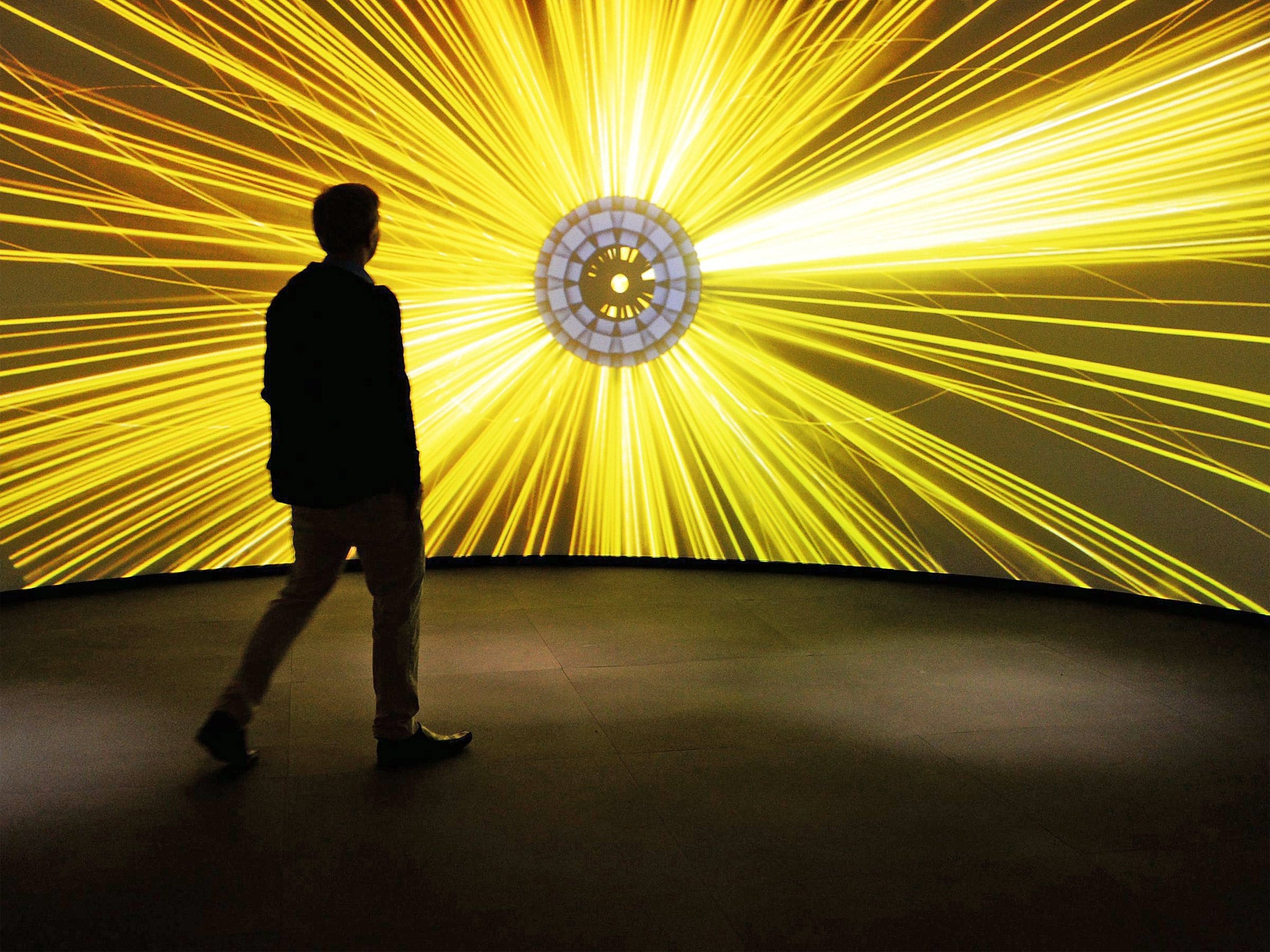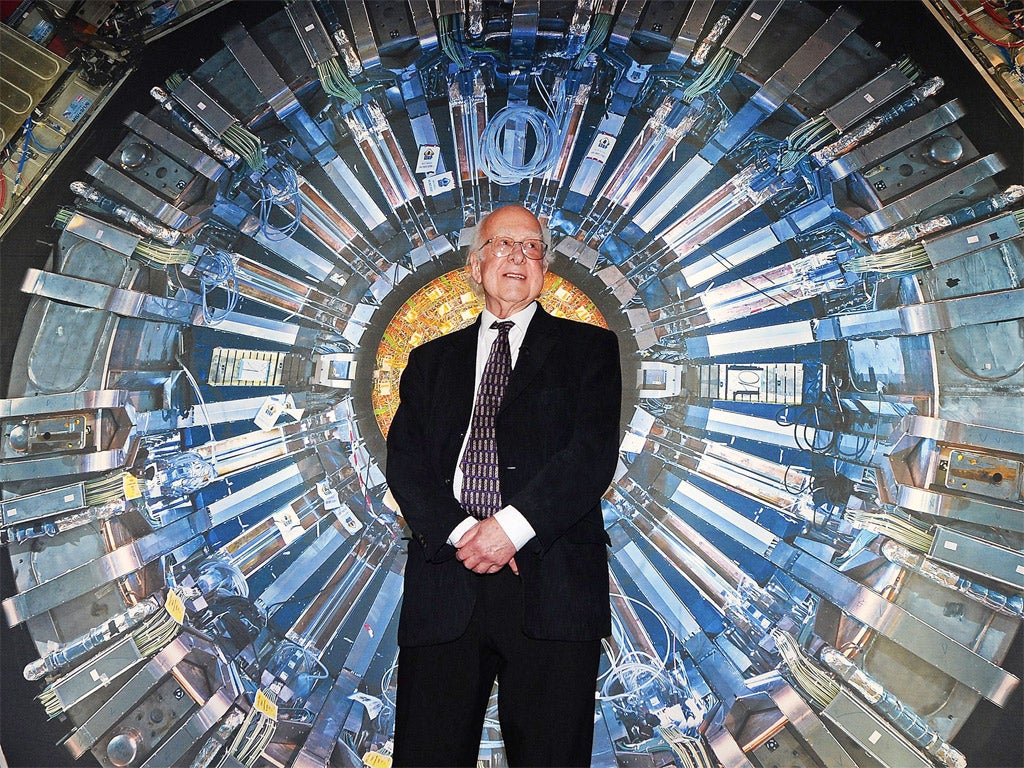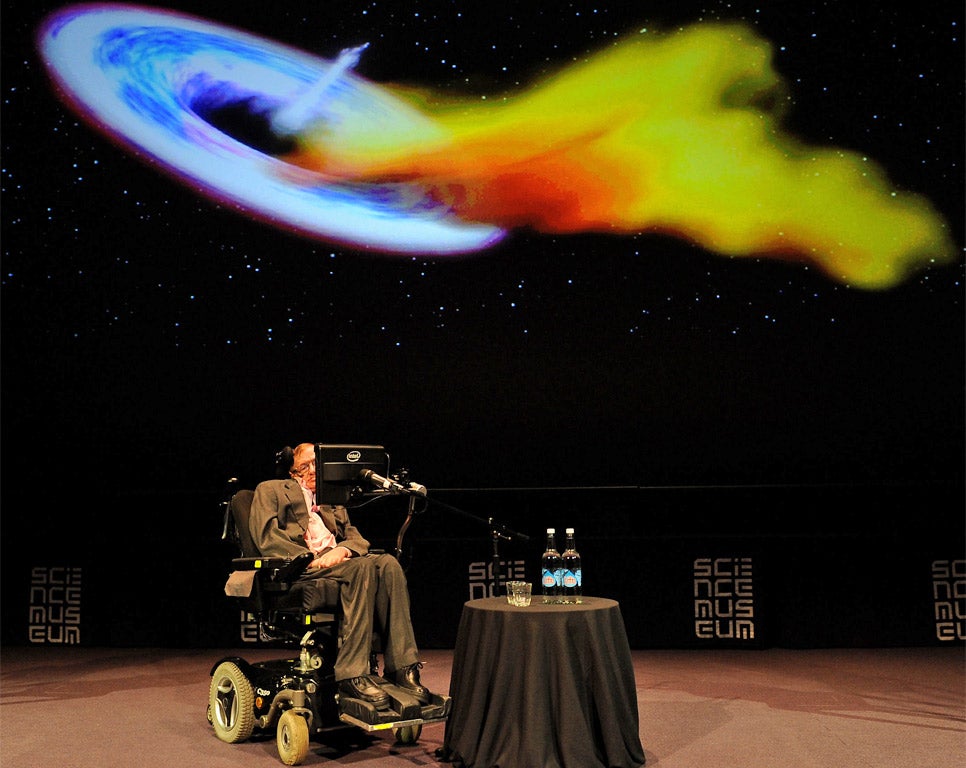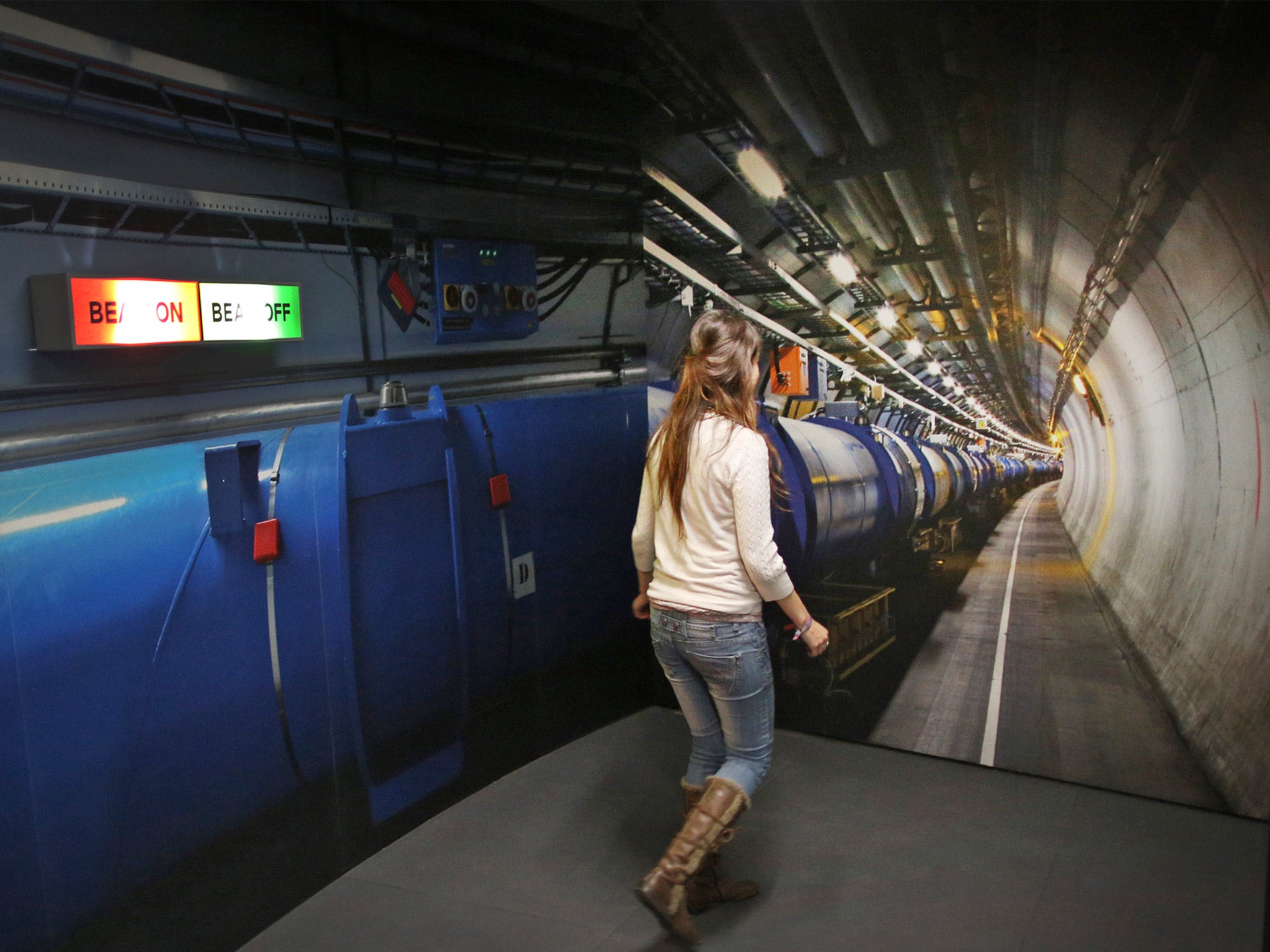To boldy go... where no museum has gone before - and bring fundamental physics to the people
Stephen Hawking and Peter Higgs back launch of one of the most ambitious exhibitions in Science Museum's 150-year history

Your support helps us to tell the story
From reproductive rights to climate change to Big Tech, The Independent is on the ground when the story is developing. Whether it's investigating the financials of Elon Musk's pro-Trump PAC or producing our latest documentary, 'The A Word', which shines a light on the American women fighting for reproductive rights, we know how important it is to parse out the facts from the messaging.
At such a critical moment in US history, we need reporters on the ground. Your donation allows us to keep sending journalists to speak to both sides of the story.
The Independent is trusted by Americans across the entire political spectrum. And unlike many other quality news outlets, we choose not to lock Americans out of our reporting and analysis with paywalls. We believe quality journalism should be available to everyone, paid for by those who can afford it.
Your support makes all the difference.They are stellar names in the scientific firmament and today they sprinkled their stardust over the Science Museum in London on the eve of one of the most ambitious exhibitions in its 150-year history.
Stephen Hawking, the world's most famous living scientist, and Peter Higgs, whose name is synonymous with the most famous atomic particle, made separate public appearances at the museum to mark the opening of Collider, a bold endeavour to bring fundamental physics to the people.
The exhibition attempts to explain the highly complex machine at the heart of the search for the Higgs boson, a subatomic particle that Professor Higgs first proposed in 1964 to explain why matter has mass.
The real Large Hadron Collider (LHC) is sited at the European Organisation for Nuclear Research (Cern) in Geneva but now there is a far smaller and simplified version in central London which tells the story of how this most complicated and intricate of scientific instruments explores the fundamental building blocks of the Universe.
With his trademark wit, Professor Hawking said he was disappointed that the Higgs had been found, partly because life would be far more interesting as it would mean that the Standard Model of physics would have to be re-thought.
Click here to see more pictures from the exhibition
"But the discovery of the new particle came at a personal cost. I had a bet with Gordon Kane of Michigan University that the Higgs particle wouldn't be found. The Nobel Prize cost me $100," Professor Hawking said.
Professor Higgs, long retired from Edinburgh University, shared this year's Nobel Prize in Physics with Francois Englert of the Free University of Brussels who, independently of Higgs, carried out his own work on massive particles with his Brussels colleague Robert Brout, who died in 2011.
Professor Higgs, who disappeared for a solitary lunch when the Nobel committee was trying to telephone him about his award, was typically modest about the role of the Higgs mechanism, the process he devised to explain why some particles and objects are heavier than others - and why some have no mass at all.

"I was quite worried at one time that the importance of the discovery of this particular particle was being overplayed because it was putting into the background all the other things that the LHC was supposed to do - and I thought that was not such a good idea," Professor Higgs said at a press preview of Collider.
He also said he would have liked to share his Nobel Prize with Tom Kibble of Imperial College London, who also published scientific papers in 1964 and 1967 predicting the existence of an invisible "force field" pervading the Universe that imparts mass to matter.

Under the rules of the Nobel Prize, however, no more than three living scientists can be given the award.
"What the Nobel committee did was to award it to the two survivors of the first three, but my opinion before the award was announced was that if they were going to award it to three people then they should include Tom Kibble," Professor Higgs said.
"His role was important and I think it's perhaps a shame that he's been missed out. But I do think that the way these prizes are awarded recognises Brout's contribution posthumously," he said.
Both Higgs and Hawking were in agreement about the next big challenge of the LHC, which is to reveal the nature of the "dark matter" and "dark energy" that pervades the Universe, but which for some reason is largely invisible to scientific instruments.
One theory is that it exists as anti-matter, or supersymmetric particles that match the particles making up the matter that we can detect.

"I think the discovery of supersymmetric partners for the known particles would revolutionise our understanding of the Universe," Professor Hawking said.
Professor Higgs agreed that the existence of supersymmetry is perhaps one of the biggest remaining questions in fundamental physics, and one that the LHC is in a good position to answer.
"I'd like to know about what I hope the LHC will soon find the answer to, which is whether there are supersymmetric particles beyond the standard model and whether these do indeed provide the candidate for the dark matter," Professor Higgs said.
Rolf Heuer, the director of Cern, said that the moment has now come for science to explore the dark energy and dark matter that have remained so elusive to particle physicists and astronomers.
"It has taken us 50 years to complete the standard model of the Universe, but 95 per cent of it is still unknown. It's high time that we enter the dark universe," Dr Heuer said.
And for anyone tempted to believe that the Collider in South Kensington is anything other than a wonderful museum exhibition, he added: "The exhibition is very nice, but the real thing is still in Geneva."
Join our commenting forum
Join thought-provoking conversations, follow other Independent readers and see their replies
Comments